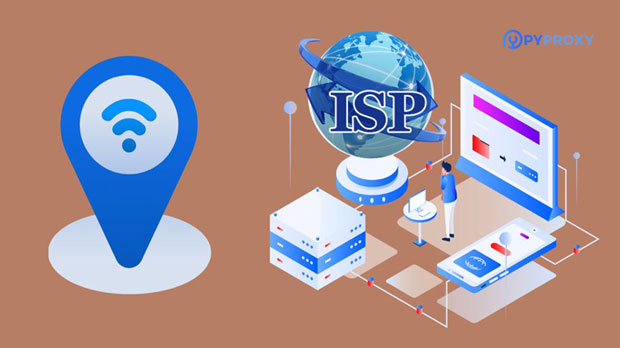In the digital age, online privacy and security have become major concerns. To mitigate risks, users often turn to proxies, with SOCKS5 being one of the most popular choices. sock s5 proxies provide greater flexibility and reliability in terms of data routing, but what about their cost? The location of a socks5 proxy can play a significant role in determining its price. This article explores how geographical choices affect the pricing of SOCKS5 proxies, helping users understand how to make more informed decisions when selecting proxies for various online tasks. Understanding SOCKS5 ProxiesSOCKS5 proxies act as an intermediary between the user's device and the internet. They provide enhanced security by routing traffic through a proxy server, masking the user’s real IP address. Unlike HTTP or HTTPS proxies, SOCKS5 proxies can handle any type of traffic, including TCP and UDP, making them a versatile option for various applications. SOCKS5 is particularly popular for bypassing geo-restrictions, protecting anonymity, and avoiding tracking during online activities.However, while SOCKS5 proxies offer several benefits, their price can fluctuate based on various factors, one of the most significant being the geographical location of the proxy server.How Location Affects SOCKS5 Proxy PricesThe price of SOCKS5 proxies is heavily influenced by the location of the server. There are several reasons why different regions or countries offer varying prices for SOCKS5 proxies. Here are the key factors to consider:1. Demand and SupplyProxies are in high demand in certain regions where internet access is either restricted or heavily monitored. For example, countries with strict online censorship laws like China, Russia, and Iran often see a higher demand for proxies that can bypass these restrictions. As demand for SOCKS5 proxies increases in these regions, so does the price. Conversely, in countries where there are fewer internet restrictions, the demand for proxies may be lower, leading to more affordable pricing.2. Cost of InfrastructureThe cost of setting up and maintaining proxy infrastructure varies by country. Developed nations with advanced internet infrastructure and more stable internet connections tend to have higher operational costs for hosting servers. This directly affects the pricing of SOCKS5 proxies. For instance, proxies located in the United States or Western Europe are often more expensive than those based in developing countries due to the higher infrastructure costs. On the other hand, servers in countries with lower operational expenses, such as India or parts of Southeast Asia, may offer cheaper SOCKS5 proxies.3. Data Privacy and Legal RegulationsDifferent regions have different data privacy laws and legal requirements, which can significantly affect the cost of proxies. Countries with strong data protection regulations, like those in the European Union under GDPR, tend to have higher costs due to compliance with these laws. On the other hand, countries with fewer privacy laws or more relaxed regulations might offer cheaper proxies but come with increased risk in terms of privacy and security.4. Proxy Type and Location PopularityThe popularity of certain locations also impacts pricing. Proxies in countries with high demand, like the United States, United Kingdom, or Germany, are typically more expensive due to the number of people seeking to access services from these regions. Users looking for SOCKS5 proxies in these high-demand locations might have to pay a premium, while those choosing less popular regions may find more affordable options.5. Speed and Performance ConsiderationsThe physical distance between a user and a proxy server can also affect the performance, such as latency and speed. Users might be willing to pay higher prices for proxies located in closer proximity to them, as this ensures faster internet speeds and more reliable connections. This is particularly important for tasks that require real-time data, like streaming, gaming, or financial trading. As a result, proxies located in regions with better internet infrastructure are often priced higher due to the expected speed and performance benefits.Regional Differences in SOCKS5 Proxy PricingIt’s essential to analyze specific regions to understand their unique impact on pricing. Let’s take a closer look at some key geographic areas and how they influence SOCKS5 proxy costs:North AmericaIn North America, particularly the United States and Canada, the cost of SOCKS5 proxies tends to be on the higher end. This is due to the advanced infrastructure, high demand, and strong privacy regulations. The United States, in particular, has a high concentration of businesses that rely on proxies for cybersecurity, e-commerce, and data scraping. Consequently, SOCKS5 proxies in North America are typically more expensive than in other regions.Western EuropeWestern Europe, including countries like the UK, Germany, and France, also sees relatively high prices for SOCKS5 proxies. Much like North America, these countries have strong data protection laws and a high level of demand for secure online browsing and privacy. The operational costs of hosting servers in these regions contribute to the higher pricing.AsiaAsia offers a wide range of pricing depending on the country. For example, Japan and South Korea have some of the fastest and most reliable internet infrastructures, making proxies from these regions relatively expensive. On the other hand, countries like India or Vietnam offer more affordable SOCKS5 proxies due to lower operational costs and less demand for high-performance proxies.Latin AmericaLatin America typically offers some of the most affordable SOCKS5 proxy options. Countries like Brazil, Argentina, and Mexico have lower operational and infrastructure costs compared to North America and Europe. However, users in these regions might experience slightly slower speeds and higher latency due to the less developed internet infrastructure.Conclusion: How to Choose the Right SOCKS5 Proxy Location for Your NeedsWhen choosing a SOCKS5 proxy, the geographical location is a critical factor to consider, especially in terms of price. The demand and supply dynamics, infrastructure costs, legal regulations, and performance requirements all contribute to the overall cost of the proxy. Users should evaluate their needs carefully: If privacy and security are paramount, a proxy in regions with strong regulations (like Europe or North America) might be worth the higher price. For less demanding tasks, or when budget is a concern, proxies from regions with lower operational costs (such as Asia or Latin America) may offer a better value.Ultimately, the right SOCKS5 proxy location depends on a balance between performance, privacy, and cost. Understanding the impact of geographic factors on pricing will help users make more informed decisions when selecting proxies to suit their specific needs.
Jul 21, 2025



































































